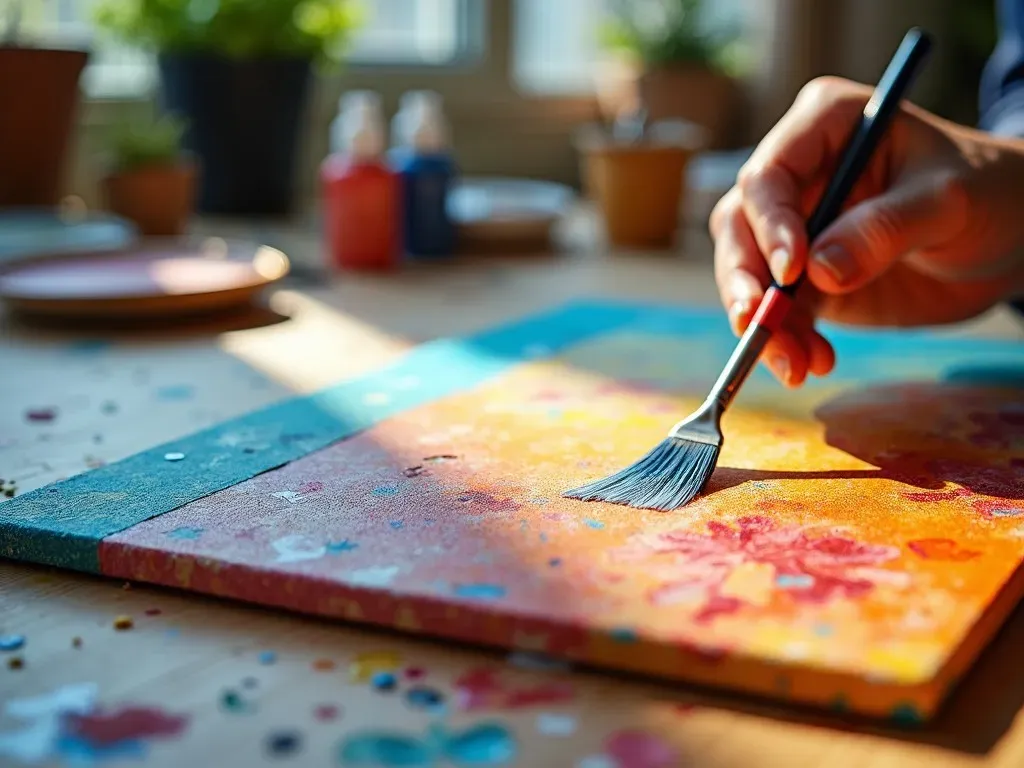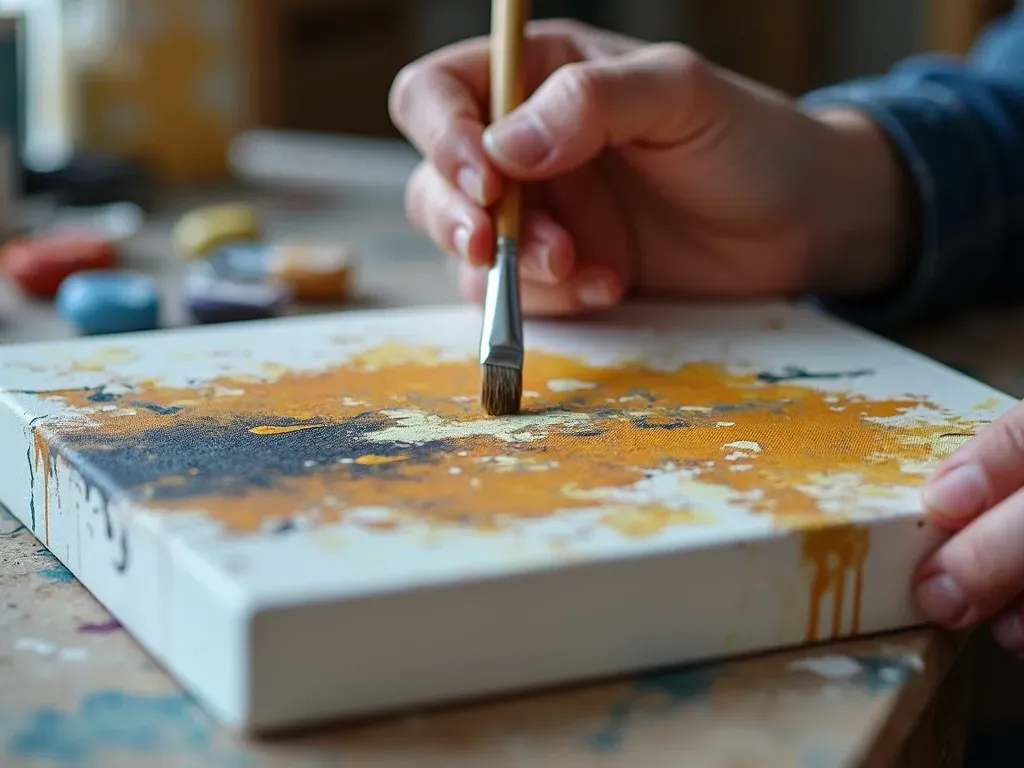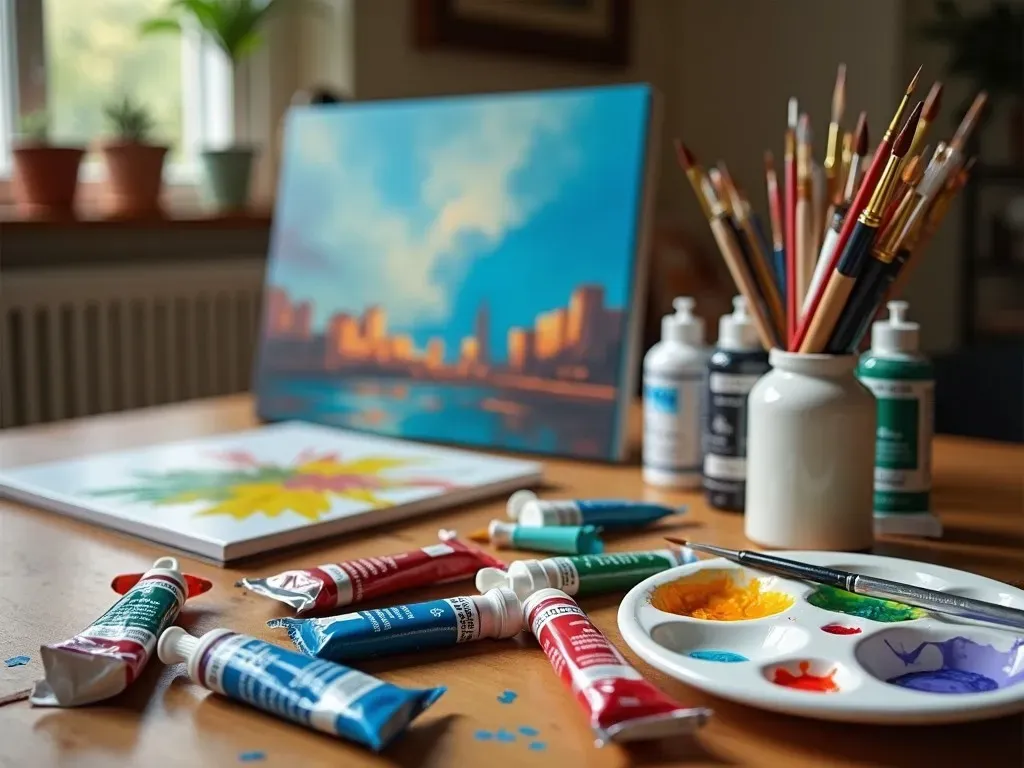The term "oil on canvas" refers to a painting technique where pigments are mixed with oils and applied to a canvas surface. This method has become one of the most popular and enduring forms of painting, dating back to the early Renaissance. Through its fluid nature and ability to create rich textures and vivid colors, oil on canvas has provided artists with a versatile medium to bring their visions to life.
The Oil on Canvas Process Explained
The Components of Oil on Canvas
To better understand the meaning of oil on canvas, it’s essential to break down its components:
-
Oil Paint: Composed of pigments suspended in a drying oil, such as linseed, walnut, or poppyseed oil, oil paint allows for easy blending and layering of colors. The choice of oil affects drying time, glossiness, and consistency.
-
Canvas: Typically made from cotton or linen, canvas serves as the sturdy support for oil painting. The texture of the canvas influences the final appearance of the artwork.
-
Priming: Before painting, the canvas is usually primed with a layer of gesso, which prepares it to accept oil paint by providing a smooth surface.
Artistic Techniques
Artists utilize various Techniques when working with oil on canvas. Here’s a summary of some prevalent methods:
| Technique | Description |
|---|---|
| Glazing | Applying thin layers of transparent paint to achieve depth and luminosity. |
| Impasto | Thick application of paint for a textured surface that creates physical depth. |
| Scumbling | A technique using a dry brush to apply a thin layer of opaque paint, allowing underlying colors to show through. |
| Alla Prima | Painting "wet-on-wet" without letting earlier layers dry, achieving a spontaneous feel. |
| Sgraffito | Scratching through wet paint to expose the layer underneath, adding complexity to textures. |
Historical Significance
Oil on canvas has been utilized by many of the world’s most renowned artists, including Leonardo da Vinci, Rembrandt, and Vincent van Gogh.
| Artist | Famous Work | Era |
|---|---|---|
| Leonardo da Vinci | Mona Lisa | Renaissance |
| Vincent van Gogh | Starry Night | Post-Impressionism |
| claude monet | Impression, Sunrise | Impressionism |
| Diego Rivera | Detroit Industry Murals | 20th Century |
Advantages of Oil on Canvas
The oil on canvas method comes with several benefits, reinforcing its popularity among artists:
- Durability: Oil paints have excellent longevity and resist fading.
- Versatility: They can be used on various surfaces and accommodate multiple styles.
- Rich Color: The oil medium allows for vibrant colors and complex hues due to its slow drying time, enabling artists to blend seamlessly.
The Artistic Journey: From Concept to Creation
Step-by-Step Process of Oil on Canvas
-
Preparing the Canvas:
- Start with a clean, primed canvas.

- Use gesso to create an even surface for paint application.
- Start with a clean, primed canvas.
-
Sketching:
- Lightly sketch the composition on the canvas using charcoal or a light pencil.
-
Underpainting:
- Create an initial layer using a monochromatic color to establish values. This layer sets the tone for subsequent applications.
-
Building Layers:
- Begin applying colors, working from dark to light as a general rule (fat over lean) to maintain flexibility and prevent cracking.
-
Refining Details:
- Use various brush sizes and techniques to add intricate details and textures.

- Use various brush sizes and techniques to add intricate details and textures.
-
Final Touches:
- Apply a final layer to enhance color vibrancy, adjust values, and add highlights.
Common Mistakes in Oil Painting
While creating artworks using oil on canvas, artists often encounter pitfalls. Here’s a list of common mistakes:
- Not Priming Canvas: Skipping gesso leads to poor paint adherence and uneven color application.
- Overworking Paint: Constantly revisiting saturated layers can turn muddy.
- Ignoring Drying Times: Not allowing layers to dry before adding new ones often results in unwanted blending.
- Using Cheap Brushes: Low-quality brushes can restrict artistic expression and lead to poor outcomes.
- Poor Color Mixing: Misunderstanding color theory can mislead artists into creating unintended shades.
Oil on Canvas in the Modern Era
In contemporary art, the oil on canvas technique continues to thrive. Artists are blending this traditional method with modern themes and innovative styles, leading to expressions that capture today’s cultural landscape. The resurgence of oil painting as a viable artistic medium demonstrates its versatility and emotional depth.
For more information about oil painting, visit Britannica – Oil Painting.
Frequently Asked Questions
What Does "Oil on Canvas" Symbolize in Art?
Oil on canvas signifies a blend of traditional artistry with personal expression. The technique is often associated with mastery in painting due to its complexity and the skill required to manipulate oil paints.
How Does Oil on Canvas Compare to Other Painting Techniques?
Compared to acrylic or watercolor, oil on canvas offers richer textures and prolonged blending time, allowing artists greater flexibility. However, it also has a longer drying time, which can be a disadvantage for those preferring quick results.
Why Do Artists Prefer Oil on Canvas?
Artists favor oil on canvas for its durability and the ability to create depth and luminosity that other mediums often struggle to achieve. Furthermore, the texture of the canvas itself enhances the painting’s overall aesthetic.
Is Oil on Canvas Environmentally Friendly?
Modern oil paints have made strides towards being more environmentally friendly. Artists today can find options that reduce harmful solvents and utilize biodegradable products.
How Can I Start Painting with Oil on Canvas?
Beginners should:
- Invest in quality materials (oil paints, brushes, and canvas).
- Familiarize themselves with color theory and basic techniques.
- Practice consistently, building skills through experimentation.
 art Supplies">
art Supplies">
This comprehensive understanding of "oil on canvas meaning" highlights not just the technical aspects but also the rich history and contemporary significance of this art form.
